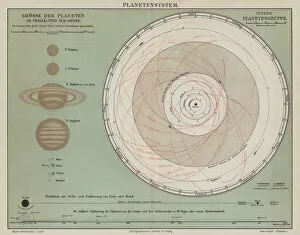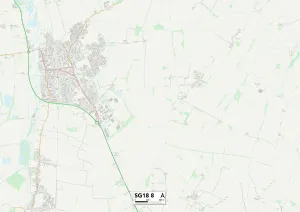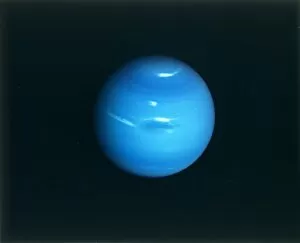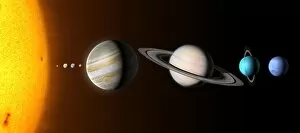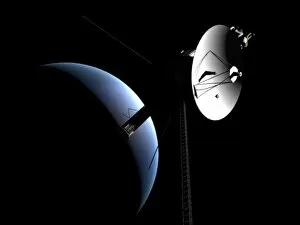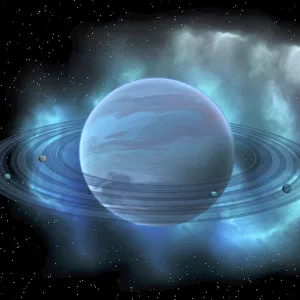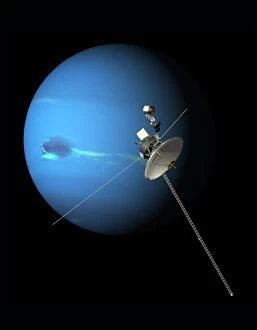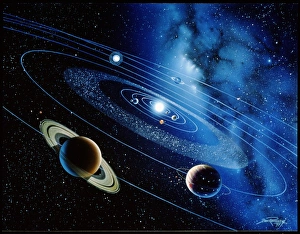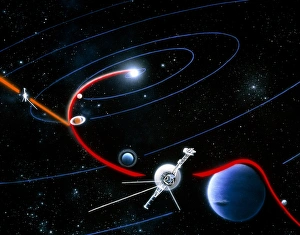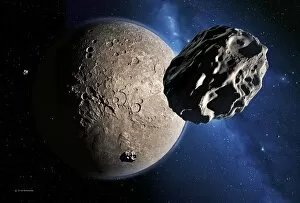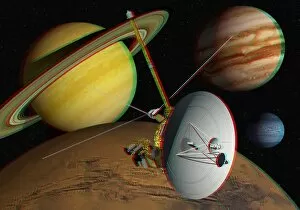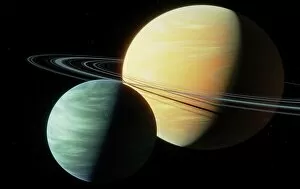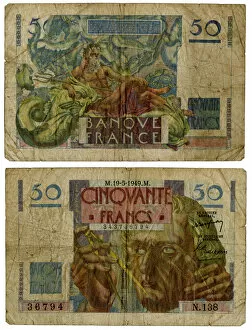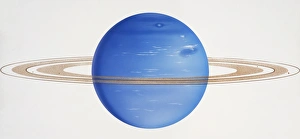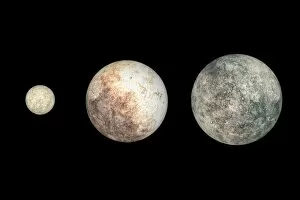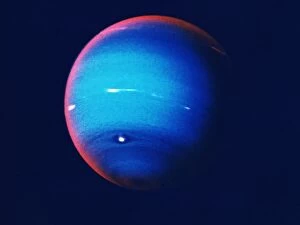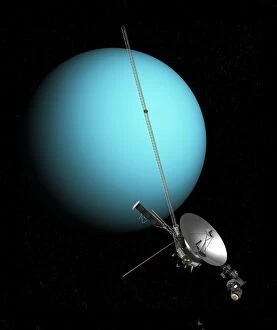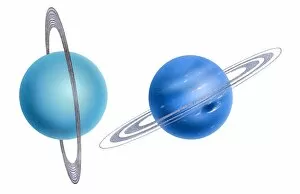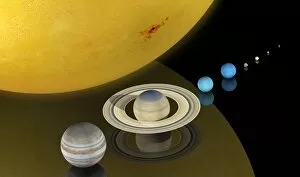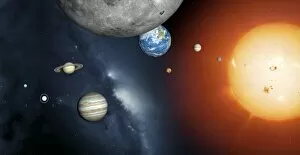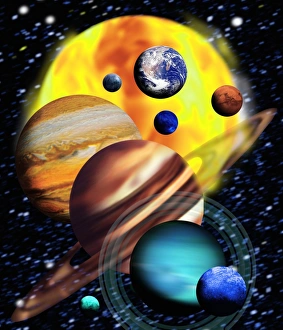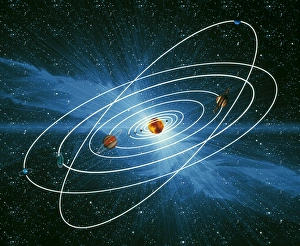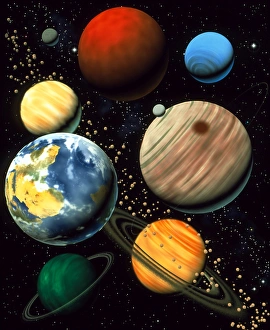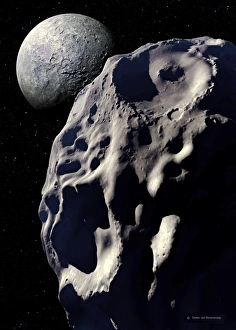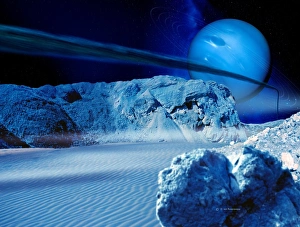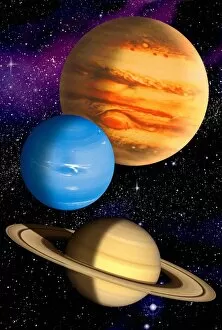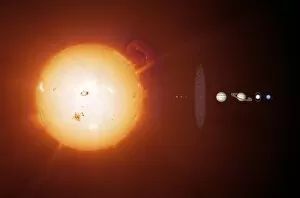Neptune Collection (page 2)
Neptune is the eighth and farthest known planet from the Sun in our Solar System
288 items
All Professionally Made to Order for Quick Shipping
-
Neptune Collection
Neptune is the eighth and farthest known planet from the Sun in our Solar System. It was discovered in 1846 by Johann Galle and Urbain Le Verrier, who used mathematical predictions to locate it. A mass 17 times that of Earth, making it the most massive of all planets after Jupiter. Its atmosphere is composed mainly of hydrogen, helium and methane, giving it an icy blue appearance when viewed from Earth. Neptune has 13 moons orbiting around it including Triton which is its largest moon. The planet also has faint rings made up of dust particles which were discovered in 1984 by Voyager 2 spacecraft during its flyby mission to explore the outer Solar System planets. Neptune's orbit around the Sun takes 165 years to complete one revolution and its average temperature is -214°C (-353°F). With further exploration we may discover more about this mysterious distant world.
+
Our beautiful pictures are available as Framed Prints, Photos, Wall Art and Photo Gifts
The Neptune collection from Media Storehouse is a stunning assortment of space exploration science artwork that captures the beauty and mystery of this distant planet. Our collection features wall art, framed prints, photo prints, canvas prints, jigsaw puzzles, and greeting cards that showcase the awe-inspiring images captured by NASA's Voyager 2 spacecraft during its flyby in 1989. Each piece in our collection offers a unique perspective on Neptune's vibrant blue hue and swirling clouds. From close-up shots of its icy rings to panoramic views of its atmosphere, these artworks provide an immersive experience for anyone interested in astronomy or space exploration. Whether you're looking to decorate your home with beautiful space-themed art or searching for a thoughtful gift for someone who loves all things celestial, the Neptune collection has something for everyone. With high-quality printing techniques and durable materials used throughout each product type offered by Media Storehouse - it is sure to impress any viewer.
+
What are Neptune (Planets Space Exploration Science) art prints?
Neptune art prints are a collection of high-quality images that depict the planet Neptune, captured through space exploration and scientific research. These prints showcase the beauty and mystery of this distant blue giant, with its swirling clouds and icy rings. The images are carefully selected to provide an accurate representation of Neptune's unique features, including its massive storms and complex weather patterns. These art prints are perfect for anyone who is fascinated by space exploration or has an interest in astronomy. They make great additions to any home or office decor, providing a sense of wonder and inspiration. Whether you're looking for a single print or want to create a gallery wall featuring multiple images, there is sure to be something that catches your eye among our selection. Neptune art prints offer a stunning glimpse into the wonders of our solar system and serve as reminders of humanity's ongoing quest for knowledge about the universe around us.
+
What Neptune (Planets Space Exploration Science) art prints can I buy from Media Storehouse?
We offer a wide range of Neptune art prints that are perfect for anyone interested in planets, space exploration, and science. These prints feature stunning images of the eighth planet from the sun captured by NASA's Voyager 2 spacecraft during its flyby in 1989. You can choose from a variety of Neptune art prints that showcase different aspects of this fascinating planet. Some prints highlight its beautiful blue color and swirling clouds, while others focus on its unique features such as the Great Dark Spot or Triton, one of its largest moons. Whether you're looking for a large canvas print to hang on your wall or a smaller framed print to display on your desk, we have something for everyone. These high-quality art prints are sure to add an element of wonder and awe to any room in your home or office.
+
How do I buy Neptune (Planets Space Exploration Science) art prints?
To purchase Neptune art prints from Media Storehouse, you can browse our collection of space-themed artwork on their website. Once you have found the print that you would like to purchase, simply add it to your cart and proceed to checkout. You will be prompted to enter your shipping and payment information before completing your order. We offer a variety of sizes and framing options for their art prints, so be sure to select the option that best suits your needs. We also offer a range of other space-related artwork featuring planets, galaxies, and more. If you have any questions or concerns about purchasing Neptune art prints from Media Storehouse, they have a customer service team available to assist with any inquiries. With high-quality printing techniques used in producing these artworks, buying one is an excellent way of bringing some outer-space magic into your home or office décor.
+
How much do Neptune (Planets Space Exploration Science) art prints cost?
We offer a wide range of Neptune art prints that are perfect for space exploration enthusiasts and lovers of astronomy. Our collection features stunning images captured by NASA's Voyager 2 spacecraft during its flyby mission in 1989. These high-quality prints showcase the beautiful blue hues and swirling clouds that make up Neptune's atmosphere. While we cannot disclose specific pricing information, our Neptune art prints are competitively priced to ensure that they are accessible to everyone who wants to add a touch of space-themed decor to their home or office. We also offer a variety of sizes and framing options so you can customize your print to fit your personal style. Whether you're looking for a unique gift for someone special or simply want to treat yourself, our selection of Neptune art prints is sure to impress.
+
How will my Neptune (Planets Space Exploration Science) art prints be delivered to me?
Your Neptune art prints from Media Storehouse will be delivered to you securely and safely. We use high-quality packaging materials to ensure that your artwork arrives in pristine condition. Your prints will be carefully rolled and placed inside a sturdy cardboard tube, which is then sealed with tape to prevent any damage during transit. We work with trusted courier partners who offer reliable delivery services worldwide. You can track the progress of your order through our website using the tracking number provided once your order has been dispatched. We take great pride in delivering exceptional customer service and ensuring that our customers are completely satisfied with their purchases. If for any reason you are not happy with your Neptune art prints, please do not hesitate to contact us so that we can resolve any issues as quickly as possible.

